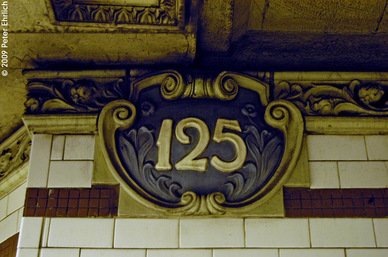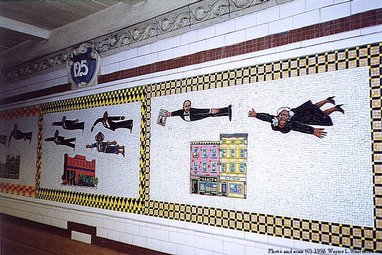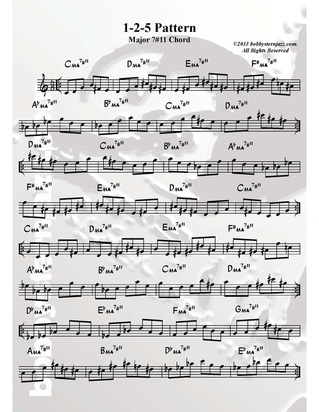
This time, we meet some of their relatives, namely two more groups of "1-2-5's", spaced a Major 3rd apart. Together, these 2 groups (in C: C-D-G & E-F#-B) form a Maj.7#11 chord.
Again, these 6 notes form a hexatonic scale (in C: C-D-E-F#-G-B), as well as the triad pairs C Maj & B min.

1-2-5, 1-5-2, 2-1-5, 2-5-1, 5-1-2 and 5-2-1.
Add a second 3 note group as we've done here, and the number increases exponentially to 36 six note combinations. Switch the order of the two groups, and you double the pleasure and the fun to 72! Multiply that by 12 keys, and the bill comes to 864 unique combinations!
The exercise here presents just 3 of the basic 72 combos. Namely:
1-2-5 (group1) with 5-2-1 (group2),
5-2-1 (group2) with 1-2-5 (group1),
as well as
5-1-2 (group1) with 1-5-2 (group2).
Just a small sampling.
Obviously, any of these patterns will sound good as a Lydian tonality (C Maj7#11), as well as an unaltered ii-V7, derived from and resolving to the parent tonality from which the Maj7#11 is derived (i.e., C Maj7#11 = A-7 / D7 = G). Unlike the exercise in Part 1, this one does contain a tritone, so a dominant tonality is in order.
Load up some backgrounds in Band-in-a-Box or iReal b, or play to a drone and hear how this pattern relates to different chords and bass notes. Let your imagination be your guide.
As that great 20th century American poet, Slim Harpo, once said,
"I know you can do it,
so baby, get to it!"
Scratch my back!

 RSS Feed
RSS Feed









